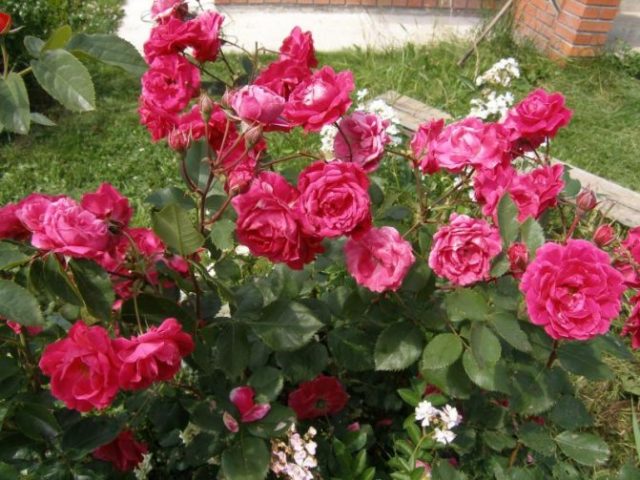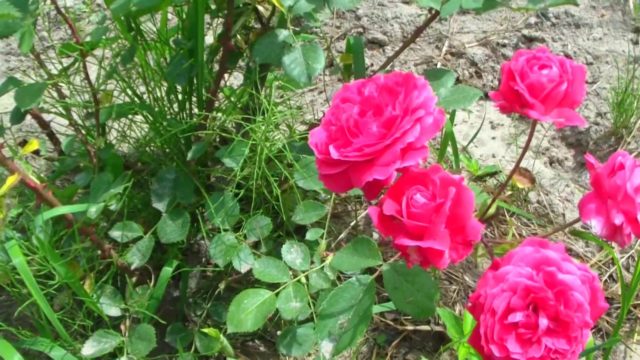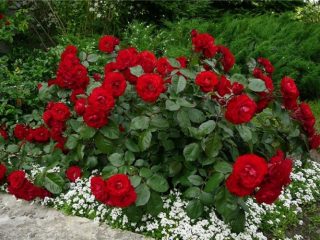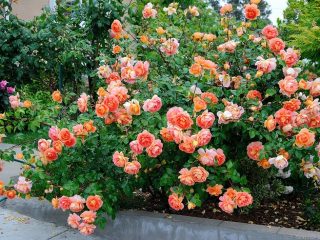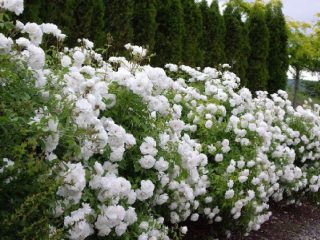Content
- 1 Breeding history
- 2 Description of Canadian park rose Alexander Mackenzie and characteristics
- 3 Advantages and disadvantages
- 4 Reproduction methods
- 5 Planting and caring for a rose Alexander Mackenzie
- 6 Pests and diseases
- 7 Application in landscape design
- 8 Conclusion
- 9 Reviews with a photo about the Canadian park rose Alexander Mackenzie
Rose Alexander Mackenzie is an ornamental varietal plant. It has won love and popularity in many countries. The culture is classified as a typical remontant park species. Thanks to the efforts of Canadian breeders, it has acquired excellent decorative qualities, while being unpretentious. The main varietal characteristic is wild growth in width.
Breeding history
Rose Alexander Mackenzie was bred in Canada in 1985 on the instructions of the Department of Agriculture. The province of Ontario is considered the homeland of the variety. The culture was named after the traveler, naturalist Alexander Mackenzie, who explored the entire Pacific coast at the end of the 18th century. To create it, the following varieties were used: Queen Elizabeth, Suzanne, Red Dawn.
Description of Canadian park rose Alexander Mackenzie and characteristics
This is a tall, powerful bush, the length of which reaches 2 m, rare specimens stretch up to 300 cm. Because of these qualities, the rose is considered semi-twisted. In width, the shrub can grow up to 1.5 m. Its crown is dense, lush, spreading. During the flowering period, the rose bush looks especially impressive.
Shoots are erect, thick, and become drooping towards the ends. They do not need support, they will easily decorate any vertical structure.
The leaves are large, smooth, shiny, characteristic of roses in shape. Their surface is like a waxy one.
Alexander Mackenzie rose buds are bright crimson, small, up to 10 cm in diameter. They are collected in large brushes of 10-15 pieces each.
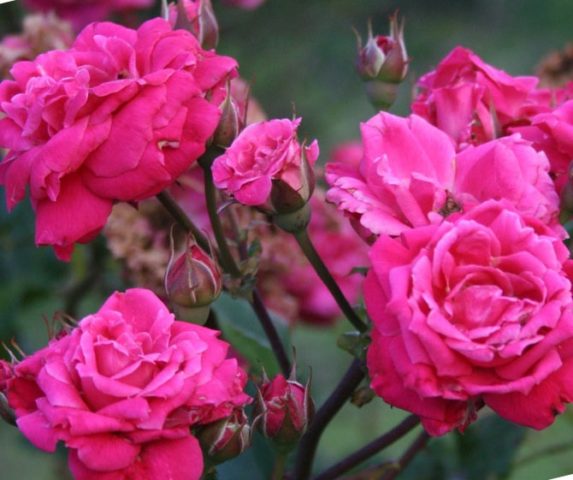
Alexander Mackenzie's outer petals may darken and dry out after rain
The flowers are elongated, densely double, lush. They consist of 20 or 40 petals. Freshly blossomed buds are bright crimson, darken as they mature, and may become dark pink during the wilting period. If the ornamental shrub grows in open areas in direct sunlight, the buds may fade, become pale rosy, which does not spoil their appearance.
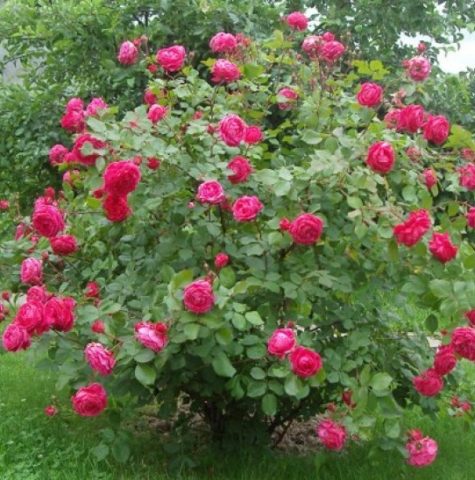
During the budding period, the Alexander Mackenzie rose exudes a delicate berry aroma, reminiscent of the smell of strawberries or raspberries.
The flowering of the Alexander Mackenzie variety is remontant, continuous or undulating, repeated twice per season. The first time the rose bush gives buds in early July, then in August. Between these periods, several bright inflorescences remain on the long shoots.
The variety is resistant to low temperatures, in winter it tolerates a decrease to -35 ᵒС. The culture does not suffer from harmful insects, it is not susceptible to fungal diseases. In late summer, some plants may suffer from black spot.
Rose Alexander Mackenzie is demanding on the composition of the soil, it shows good decorative qualities on soils rich in humus with an admixture of clay. Also, the earth should be light, breathable, slightly acidic. In the spring, the crop needs pruning.
Advantages and disadvantages
The main disadvantage of the variety is considered exactingness to the composition of the soil. But this negative quality can be attributed to its features.
Advantages:
- high decorative qualities;
- renovation;
- frost resistance, no need for winter shelter;
- the versatility of the plant;
- resistance to pests and diseases.
Also, the culture easily and painlessly tolerates rooting, quickly takes root in a new place.
Reproduction methods
The Alexander Mackenzie park rose can be propagated by three methods: cuttings, layering, dividing the bush.
For the first method, lignified shoots up to 4 mm thick are used.
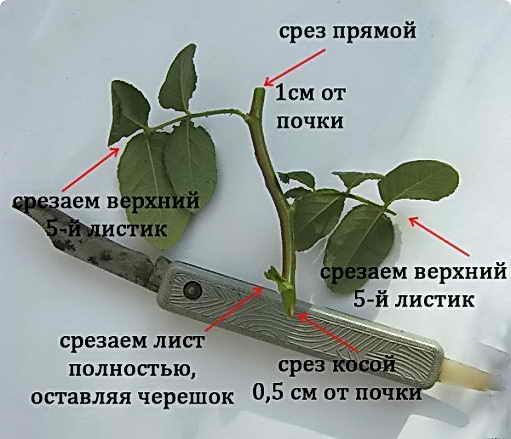
Cuttings are harvested in autumn, and cuttings in early spring
At the end of winter, the shoot is divided into parts 15 cm long.After they are immediately dipped into the water. A few days later, the stalk is planted in open ground under a jar, watered regularly until rooting.
The division of the bush is carried out at the end of April before bud break.
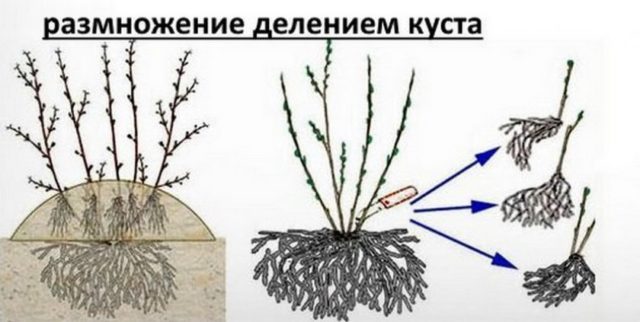
For reproduction, adult overgrown specimens with a strong root system are chosen.
The rose is dug up, trying to preserve all the underground processes. With a sharp pruner, the bush is divided into several parts, each of them should have a root and several shoots. Long or damaged processes are cut from the underground part. The shoots are shortened, leaving 3 living buds. Places of cuts are treated with garden pitch, the root is dipped into a clay chatterbox. A young plant is planted in open ground.
Rose variety Alexander Mackenzie is convenient to propagate by layering, since it has long flexible shoots.
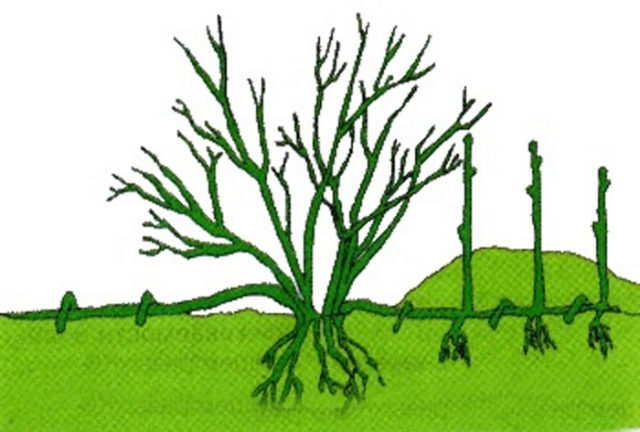
The rooting procedure is carried out in the spring before bud break
The area around the rose bush is fertilized, dug up. Choose a flexible, ripe shoot, make a notch on it around the circumference in the place where it will come into contact with the soil. The shoot is bent to the ground, fastened with staples. The place of the cut is lightly sprinkled with soil mixed with humus.
Planting and caring for a rose Alexander Mackenzie
The place for rooting is chosen well-lit, without groundwater, protected from drafts. This culture prefers nutritious, fertile, slightly acidic soils. Before planting, the site is carefully dug up, peat and humus are introduced.
Previously, the Alexander Mackenzie rose seedlings are kept in a root formation stimulator for 4 hours.
Landing Algorithm:
- Dig a hole 0.5 m deep.
- Put expanded clay or sand on the bottom with a thin layer.
- Pour peat in the second layer.
- Lower the seedling into the hole, the root collar should be 3 cm below the soil level.
- Cover the rhizome with earth, tamp it.
After planting, the plant is watered and mulched.
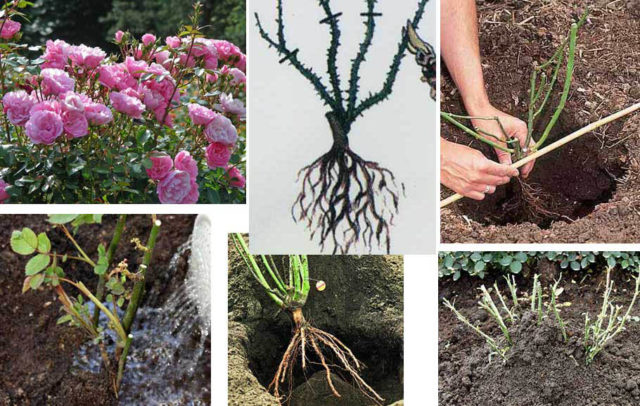
When marking the flower beds, the dimensions of the ornamental bush are taken into account, the indents between the holes are made at least 2 m
Water the Alexander Mackenzie rose with warm, settled water at least 2 times a week. After irrigation, weeds are removed, the bushes are examined.
Alexander Mackenzie's rose pruning is carried out 3 times a year: in spring, summer, autumn. After winter, the frozen shoots are removed, the rest are shortened, leaving 5 to 7 buds on them. In the summer, long branches are cut, and faded buds are removed. In autumn, a sanitary procedure is carried out, removing dry, broken, thin and long shoots.
As soon as Rose Alexander Mackenzie turns 3 years old, they begin to feed her. Nitrogen fertilizers are used in the spring, potash and phosphorus fertilizers in the summer. No top dressing is added after August.
Pests and diseases
Rose Alexander Mackenzie is rarely sick. In cold, rainy summers, it can suffer from black spot. In this case, garden antifungal drugs are used.
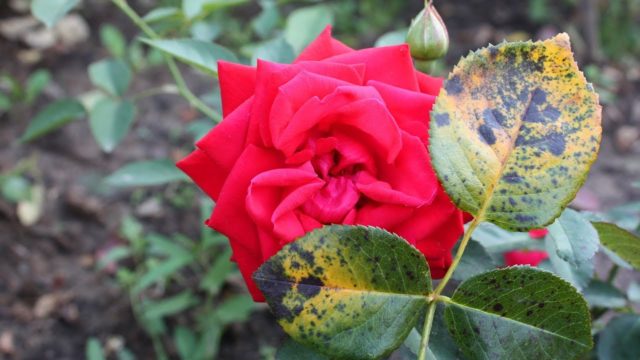
As a result of the defeat of black spot, the rosebush intensively loses its foliage, flowering stops
In hot, dry weather, Alexander Mackenzie attacks the green part of the park rose with a spider mite. Affected and fallen leaves are collected and destroyed. The plant is treated with systemic insecticides 3 times with an interval of 7 days.
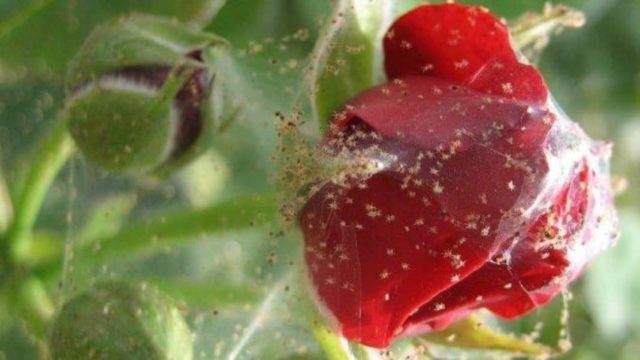
Improper and insufficient care, abnormal heat are the main reasons for the appearance of spider mites on roses
Application in landscape design
Rose Alexander Mackenzie is grown as a tapeworm (single plant) or in group landscape plantings. A blooming culture can be used as a climbing culture by decorating a small arch, gazebo, fence or wall of a building.The budding process will continue throughout the summer, the shrub will revive and decorate a country estate, a city alley or a flower bed.
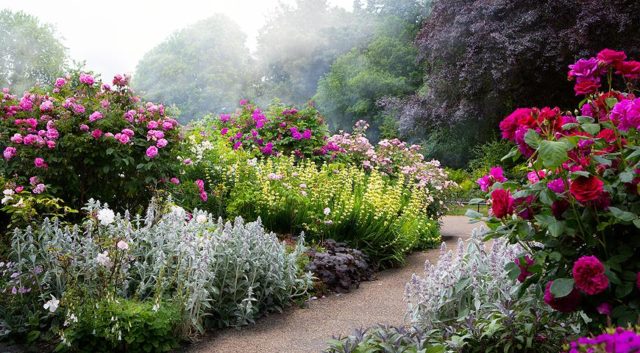
It is the rose of Alexander Mackenzie that is often used in park landscape designs.
Conclusion
Rose Alexander Mackenzie is a good varietal plant that is resistant to frost, pests, and diseases. It can be cultivated in Central Russia and in the northern regions. Despite its high decorative qualities, the rose is quite unpretentious; even a novice florist can cope with its explantation. The plant is versatile, it can be arranged as a bush or in the form of a loach, combined with any garden crops.
Reviews with a photo about the Canadian park rose Alexander Mackenzie
